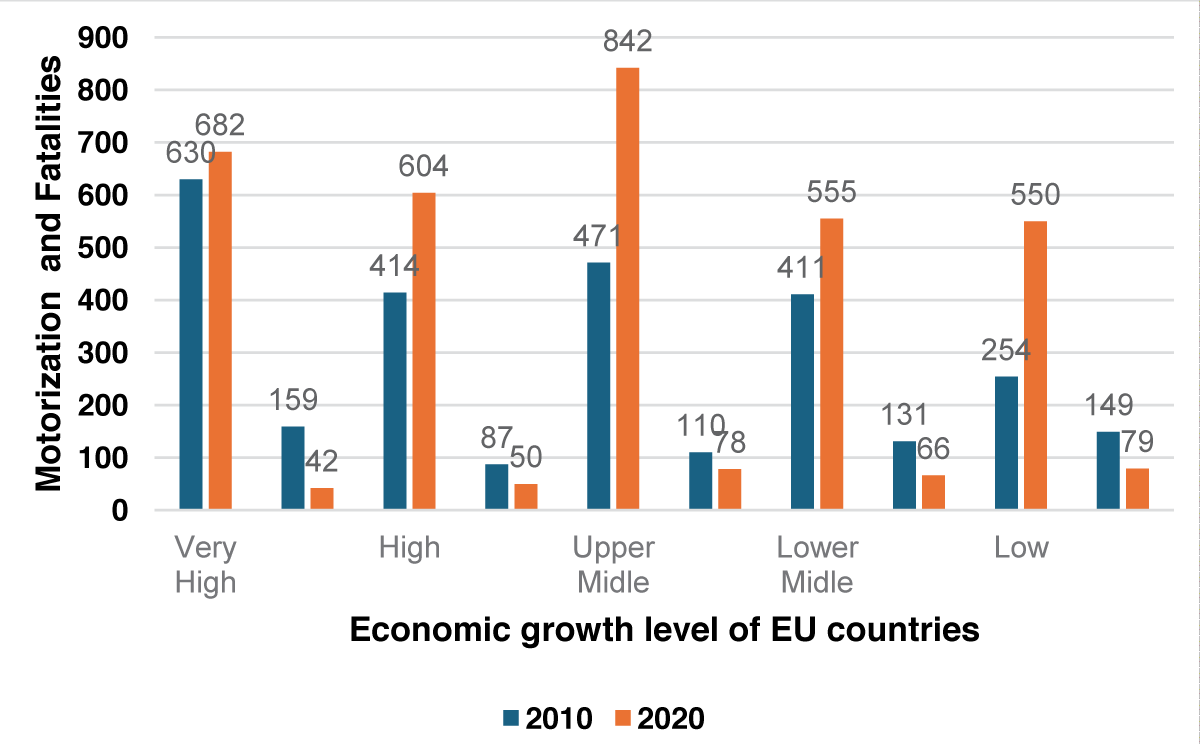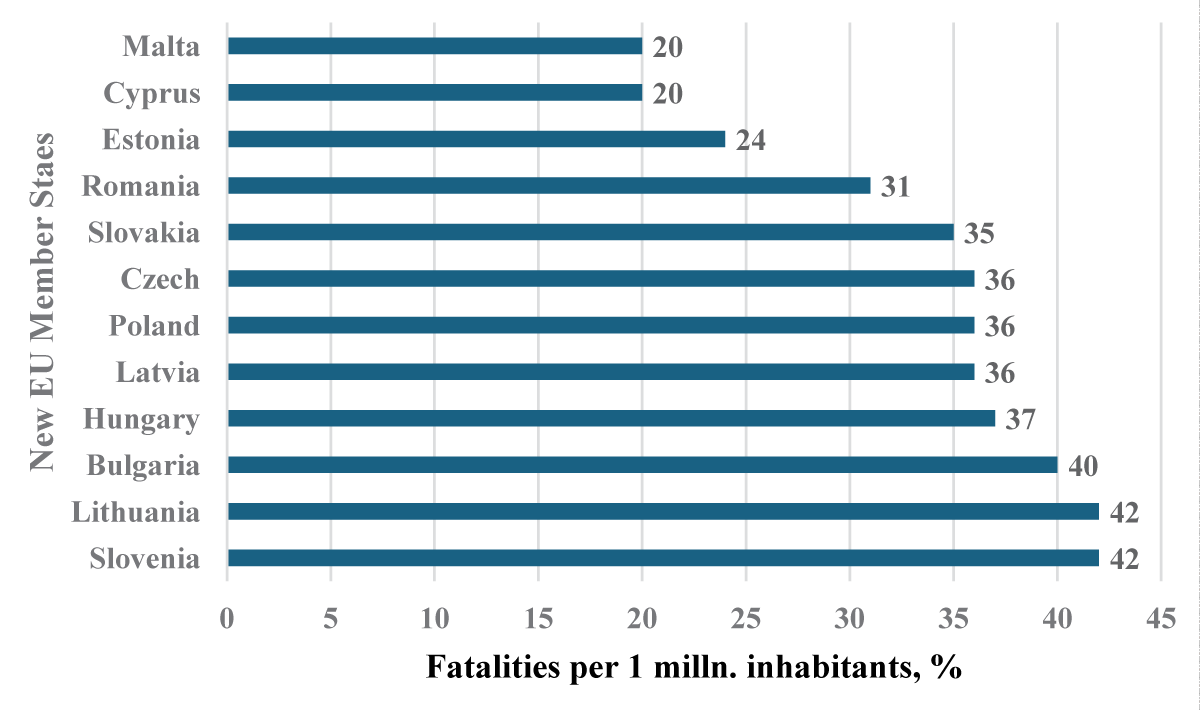Assessment of EU Countries’ Ability to Attain the Ambitious “Zero Victim” Goal by 2050
Introduction The European Union has made significant strides in road safety over the past two decades, achieving notable reductions in road fatalities. However, the ambition to reach “Zero Victims” by 2050 poses substantial challenges and requires a comprehensive evaluation of each member state’s progress and capabilities. This post delves into a detailed analysis of the factors influencing road traffic safety and explores how economic growth and motorization trends impact the EU’s mission to achieve this ambitious goal.
Economic Growth and Motorization Trends A key focus of this analysis is the relationship between economic expansion, the rate of motorization, and road traffic fatalities. From 2010 to 2020, data indicates that while motorization has increased across the EU, there are varying outcomes in terms of road safety improvements. High-income nations, such as Luxembourg and Ireland, have shown a balance between motor vehicle growth and decreasing fatalities. Conversely, lower-income countries have struggled with higher increases in vehicle numbers relative to the decline in road fatalities.
Findings and Key Correlations
- Economic Growth and Motorization: There is a strong correlation between economic development and the motorization rate. Higher GDP per capita is typically linked with more vehicles per capita, enhancing mobility but also posing greater risks for road safety.
- Road Fatality Trends: The decline in road fatalities is not uniformly distributed across EU countries. Nations with robust economic growth often implement effective road safety measures and advanced vehicle safety features, leading to better outcomes.
- Disparities Among Member States: Data from 2020 shows significant disparities in road safety achievements. Countries like Sweden and Malta recorded the lowest road fatality rates, while Romania and Bulgaria had the highest. This indicates a need for targeted interventions in lower-income nations.
Policy and Technological Implications The EU’s roadmap to achieving the “Zero Victim” vision involves integrating safe speed limits, advanced vehicle technologies, and improved road infrastructure. Legislative measures, such as mandatory safety features in vehicles, play a crucial role. Notable advancements include intelligent speed assistance systems and emergency braking mechanisms aimed at reducing human error, which accounts for approximately 94% of road accidents.
Challenges and Recommendations To ensure the success of this vision, the following strategies are essential:
- Enhanced Regulations and Compliance: Strict enforcement of traffic regulations and adherence to safe driving practices are paramount.
- Technological Integration: The adoption of autonomous vehicle technology and real-time monitoring systems can support safer driving environments.
- Educational Initiatives: Driver education and public awareness campaigns focusing on road safety are critical for behavioral change.
Conclusion The EU’s “Zero Victims” goal by 2050 is an ambitious yet attainable target that requires continuous effort from all member states. Addressing disparities, investing in infrastructure, and fostering innovation in vehicle safety are essential steps. Collaborative policy implementation and the use of data-driven insights will pave the way for a safer future on European roads.
Tags: EU Road Safety, Zero Victim Vision, Traffic Fatalities, Economic Growth, Motorization, Public Safety, Sustainable Mobility

: Motorization rate of old EU Member States in the 2000 – 2020 period (Source: Eurostat).

Decrease of road mortality rate in new EU countries during the 2010-2020 year (fatalities per 1 million inhabitants) percentage change. Source: European Commission: European Road Safety Observatory.
